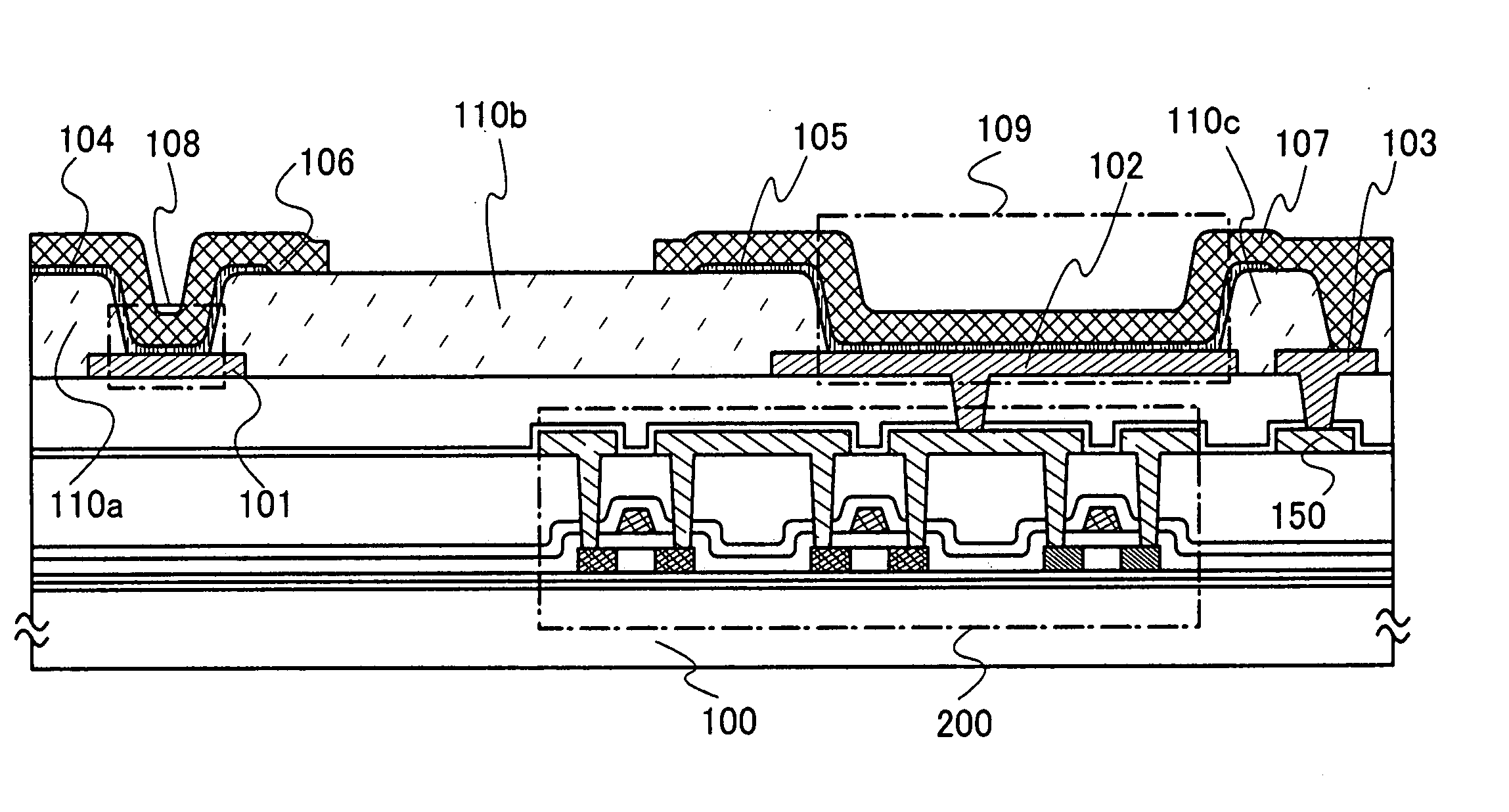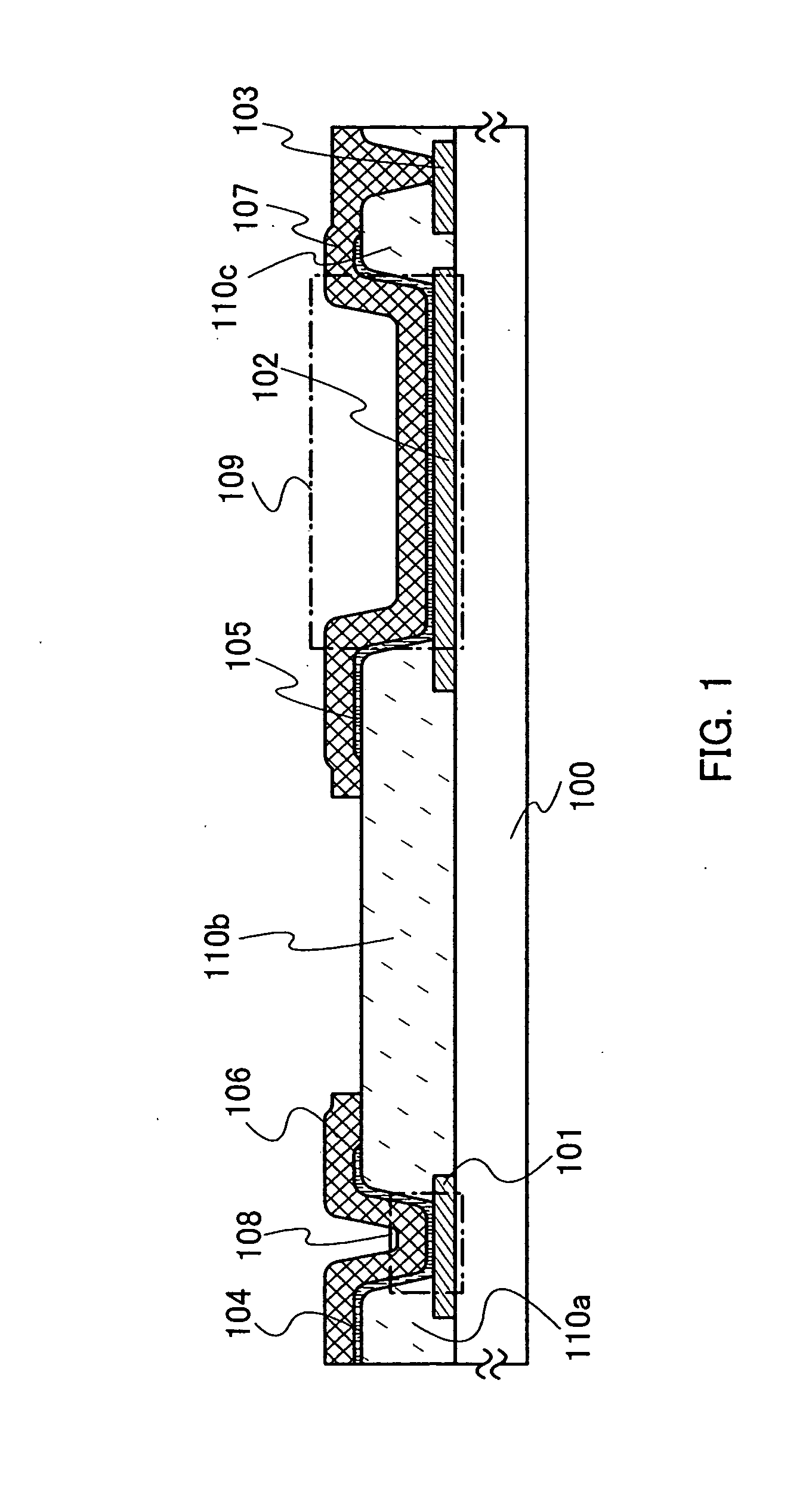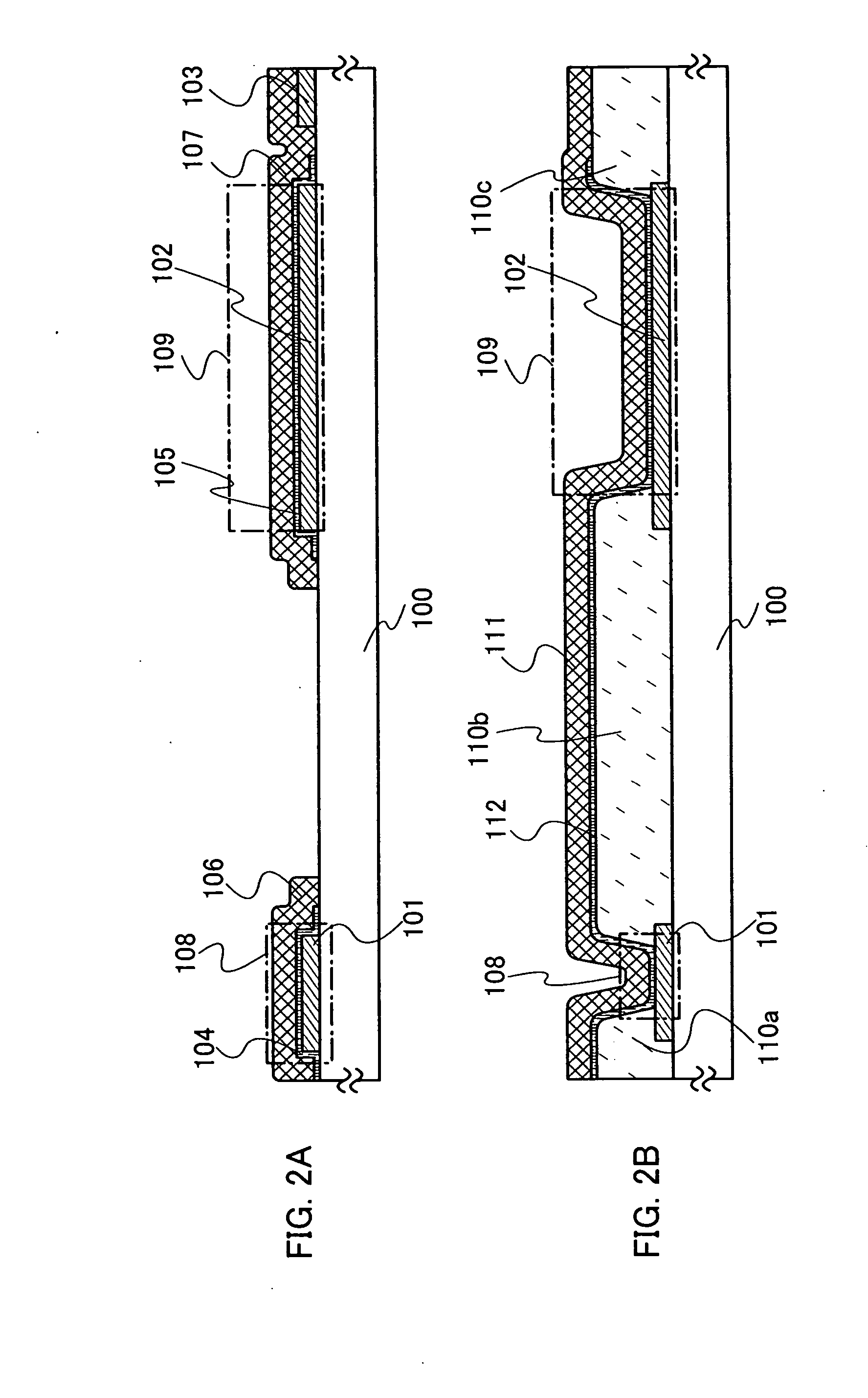Semiconductor device and manufacturing method thereof
a semiconductor device and semiconductor technology, applied in the direction of capacitors, digital storage, instruments, etc., can solve the problems of difficult reduction and large proportion of a capacity area to a semiconductor device area, and achieve the effect of reducing the capacitor area occupied in a circuit in a semiconductor device and improving the capacitance value per unit area of a capacitor
- Summary
- Abstract
- Description
- Claims
- Application Information
AI Technical Summary
Benefits of technology
Problems solved by technology
Method used
Image
Examples
embodiment mode 1
[0054] In this embodiment mode, one structural example of a semiconductor device formed of a memory element in which a layer containing an organic compound is provided between two conductive layers and a capacitor in which a layer containing the same organic compound as the memory element between two conductive layers is described with reference to drawings.
[0055] As for the semiconductor device related to the invention, a memory element 108 and a capacitor 109 are formed over a substrate 100 as shown in FIG. 1.
[0056] The memory element 108 shown in FIG. 1 is formed by stacking a first conductive layer 101, a layer containing an organic compound 104 and a second conductive layer 106. Further, the capacitor 109 is formed by stacking a first conductive layer 102, a layer containing an organic compound 105 using the same material as the memory element portion, and a second conductive layer 107. Partition layers 110a, 110b, and 110c have a function to prevent the first conductive laye...
embodiment mode 2
[0079] One structural example of a semiconductor device composed of a memory element in which a layer containing an organic compound is provided between two conductive layers and a capacitor in which the layer containing the organic compound which is the same as in the memory element is provided between two conductive layers is described with reference to drawings in this embodiment mode which is different from Embodiment Mode 1.
[0080] The structure in which the memory element 108 and the capacitor 109 are provided over the substrate 100 is shown in FIG. 1; however, the invention is not limited to this, and a transistor group 200 is provided over the substrate 100, and the memory element 108 and the capacitor 109 may be formed thereover as shown in FIG. 3. FIG. 3 shows a structure in which the capacitor 109 is formed just above the transistor group 200, and one end of an electrode is connected to a wiring 150. Accordingly, the capacitor 109 functions as capacity between the transis...
embodiment mode 3
[0091] One structural example of a semiconductor device composed of a memory element in which a layer containing an organic compound is provided between two conductive layers and a capacitor in which the layer containing the organic compound as in the memory element is provided between two conductive layers is described with reference to a drawing in this embodiment mode which is different from Embodiment Modes 1 and 2.
[0092] The capacitor of the invention can achieve the increase of capacity by combining an existing capacitor. FIG. 7 is an example in which a conventional capacitor using a semiconductor layer and a gate metal is combined with the capacitor of the invention.
[0093] In the example shown in FIG. 7, an existing capacitor 400 is formed over the substrate 100, and the memory element 108 and the capacitor 109 are formed thereover. The capacitor 400 is a capacitor which is used conventionally and in which a source electrode layer and a drain electrode layer of a TFT are co...
PUM
 Login to View More
Login to View More Abstract
Description
Claims
Application Information
 Login to View More
Login to View More - R&D
- Intellectual Property
- Life Sciences
- Materials
- Tech Scout
- Unparalleled Data Quality
- Higher Quality Content
- 60% Fewer Hallucinations
Browse by: Latest US Patents, China's latest patents, Technical Efficacy Thesaurus, Application Domain, Technology Topic, Popular Technical Reports.
© 2025 PatSnap. All rights reserved.Legal|Privacy policy|Modern Slavery Act Transparency Statement|Sitemap|About US| Contact US: help@patsnap.com



